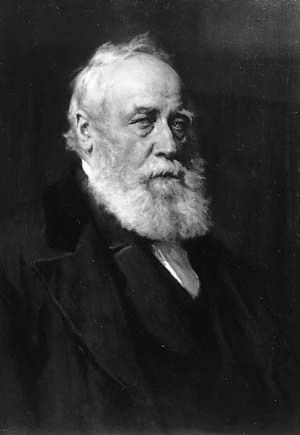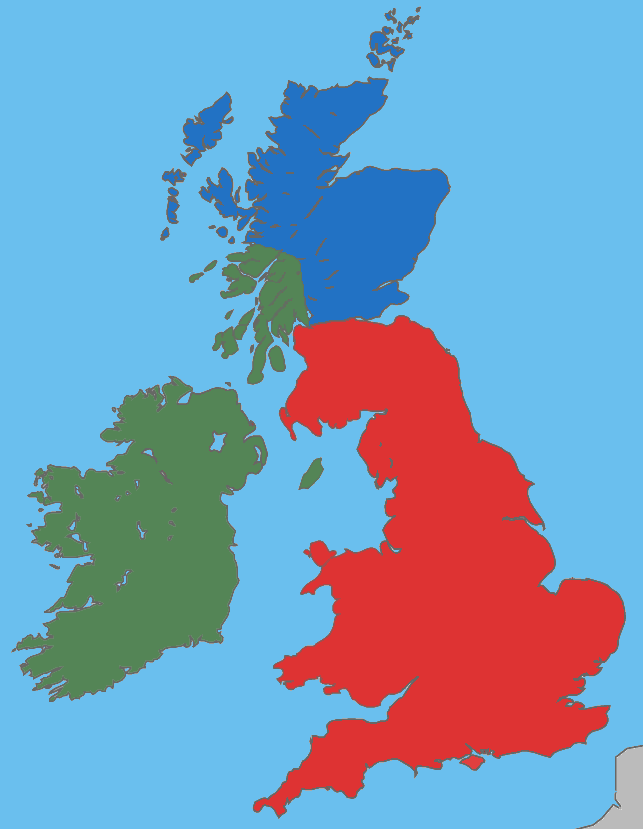|
Gwyddyl Ffichti
Gwyddyl Ffichti is a term that appears in the third series of Welsh Triads, apparently referring to the Picts. It was central to William Forbes Skene's argument that the Picts were a Goidelic, Celtic-speaking people and that their language was ancestral to modern Scottish Gaelic. The passage in which it appears is believed to be an invention of the 18th/19th century Welsh antiquarian Iolo Morganwg. The suspicion of Morganwg's forgery was first raised by Skene himself in 1868: While Skene admitted that the "authenticity of the Triads is not unexceptional", he maintained that the term was valid as it was also present in the ''Triads of Arthur and his Warriors''. Skene revised his position on the nature of the Pictish language Pictish is an extinct Brittonic Celtic language spoken by the Picts, the people of eastern and northern Scotland from late antiquity to the Early Middle Ages. Virtually no direct attestations of Pictish remain, short of a limited number of geo ... to sug ... [...More Info...] [...Related Items...] OR: [Wikipedia] [Google] [Baidu] |
Welsh Triads
The Welsh Triads (, "Triads of the Island of Britain") are a group of related texts in medieval manuscripts which preserve fragments of Welsh folklore, mythology and traditional history in groups of three. The triad is a rhetorical form whereby objects are grouped together in threes, with a heading indicating the point of likeness; for example, "Three things not easily restrained, the flow of a torrent, the flight of an arrow, and the tongue of a fool." Contents The texts include references to King Arthur and other semi-historical characters from sub-Roman Britain, mythic figures such as Brân the Blessed, undeniably historical personages such as Alan IV, Duke of Brittany (who is called ''Alan Fyrgan'') and Iron Age characters such as Caswallawn ( Cassivellaunus) and Caradoc ( Caratacus). Some triads simply give a list of three characters with something in common (such as "the three frivolous bards of the island of Britain") while others include substantial narrative explanation ... [...More Info...] [...Related Items...] OR: [Wikipedia] [Google] [Baidu] |
Picts
The Picts were a group of peoples in what is now Scotland north of the Firth of Forth, in the Scotland in the early Middle Ages, Early Middle Ages. Where they lived and details of their culture can be gleaned from early medieval texts and Pictish stones. The name appears in written records as an Exonym and endonym, exonym from the late third century AD. They are assumed to have been descendants of the Caledonians, Caledonii and other northern British Iron Age, Iron Age tribes. Their territory is referred to as "Pictland" by modern historians. Initially made up of several chiefdoms, it came to be dominated by the Pictish kingdom of Fortriu from the seventh century. During this Fortriu#Verturian_hegemony, Verturian hegemony, ''Picti'' was adopted as an endonym. This lasted around 160 years until the Pictish kingdom merged with that of Dál Riata to form the Kingdom of Alba, ruled by the House of Alpin. The concept of "Pictish kingship" continued for a few decades until it was ab ... [...More Info...] [...Related Items...] OR: [Wikipedia] [Google] [Baidu] |
William Forbes Skene
William Forbes Skene Writer to the Signet, WS FRSE Society of Antiquaries of Scotland, FSA(Scot) Doctor of Civil Law, DCL Legum Doctor, LLD (7 June 1809 – 29 August 1892), was a Scotland, Scottish lawyer, historian and antiquary. He co-founded the Scottish legal firm Skene Edwards which was prominent throughout the 20th century but disappeared in 2008 when it merged with Morton Fraser. Life He was born in Inverey, the second son of Sir Walter Scott's friend, James Skene (1775–1864), of Rubislaw, near Aberdeen, and his wife, Jane Forbes, daughter of Sir William Forbes, 6th Baronet of Pitsligo. The family moved to Edinburgh in 1817, originally living with his uncle, Andrew Skene then from 1820 living at 126 Princes Street facing Edinburgh Castle.Edinburgh Post Office Directory 1820 He was educated at the Royal High School, Edinburgh, High School in Edinburgh. He was then apprenticed as a lawyer first to Francis Wilson WS at Parliament Square then to Henry Jardine WS also ... [...More Info...] [...Related Items...] OR: [Wikipedia] [Google] [Baidu] |
Goidelic
The Goidelic ( ) or Gaelic languages (; ; ) form one of the two groups of Insular Celtic languages, the other being the Brittonic languages. Goidelic languages historically formed a dialect continuum stretching from Ireland through the Isle of Man to Scotland. There are three modern Goidelic languages: Irish ('), Scottish Gaelic ('), and Manx ('). Manx died out as a first language in the 20th century but has since been revived to some degree. Nomenclature ''Gaelic'', by itself, is sometimes used to refer to Scottish Gaelic, especially in Scotland, and therefore is ambiguous. Irish and Manx are sometimes referred to as Irish Gaelic and Manx Gaelic (as they are Goidelic or Gaelic languages), but the use of the word ''Gaelic'' is unnecessary because the terms Irish and Manx, when used to denote languages, always refer to those languages. This is in contrast to Scottish Gaelic, for which "Gaelic" distinguishes the language from the Germanic language known as Scots. In Englis ... [...More Info...] [...Related Items...] OR: [Wikipedia] [Google] [Baidu] |
Scottish Gaelic
Scottish Gaelic (, ; Endonym and exonym, endonym: ), also known as Scots Gaelic or simply Gaelic, is a Celtic language native to the Gaels of Scotland. As a member of the Goidelic language, Goidelic branch of Celtic, Scottish Gaelic, alongside both Irish language, Irish and Manx language, Manx, developed out of Old Irish. It became a distinct spoken language sometime in the 13th century in the Middle Irish period, although a Classical Gaelic, common literary language was shared by the Gaels of both Ireland and Scotland until well into the 17th century. Most of modern Scotland was once Gaelic-speaking, as evidenced especially by Gaelic-language place names. In the 2011 United Kingdom census#2011 Census for Scotland, 2011 census of Scotland, 57,375 people (1.1% of the Scottish population, three years and older) reported being able to speak Gaelic, 1,275 fewer than in 2001. The highest percentages of Gaelic speakers were in the Outer Hebrides. Nevertheless, there is a language ... [...More Info...] [...Related Items...] OR: [Wikipedia] [Google] [Baidu] |
Iolo Morganwg
Edward Williams, better known by his bardic name Iolo Morganwg (; 10March 174718December 1826), was a Welsh antiquarian, poet and collector.Jones, Mary (2004)"Edward Williams/Iolo Morganwg/Iolo Morgannwg" From ''Jones' Celtic Encyclopedia''. Retrieved 11 June 2009 (only USA, see. He was seen as an expert collector of Medieval Welsh literature, but it emerged after his death that he had forged several manuscripts, notably some of the Third Series of Welsh Triads.Mary Jones (2003)"Y Myvyrian Archaiology" From ''Jones' Celtic Encyclopedia''. Retrieved 11 June 2009 (in US only. Even so, he had a lasting impact on Welsh culture, notably in founding the secret society known as the Gorsedd, through which Iolo Morganwg successfully co-opted the 18th-century Eisteddfod revival. The philosophy he spread in his forgeries has had an enormous impact upon neo-Druidism. His bardic name is Welsh for "Iolo of Glamorgan". Early life Edward Williams was born in Pen-onn, near Llancarfan, Vale o ... [...More Info...] [...Related Items...] OR: [Wikipedia] [Google] [Baidu] |
Pictish Language
Pictish is an extinct Brittonic Celtic language spoken by the Picts, the people of eastern and northern Scotland from late antiquity to the Early Middle Ages. Virtually no direct attestations of Pictish remain, short of a limited number of geographical and personal names found on monuments and early medieval records in the area controlled by the kingdoms of the Picts. Such evidence, however, shows the language to be an Insular Celtic language – probably a variant of the Brittonic language once spoken in most of Great Britain. The prevailing view in the second half of the 20th century was that Pictish was a non-Indo-European language isolate, or that a non-Indo-European Pictish and Brittonic Pictish language coexisted. Pictish was replaced by – or subsumed into – Gaelic in the latter centuries of the Pictish period. During the reign of Donald II of Scotland (889–900), outsiders began to refer to the region as the kingdom of Alba rather than the kingdom of the Pict ... [...More Info...] [...Related Items...] OR: [Wikipedia] [Google] [Baidu] |



